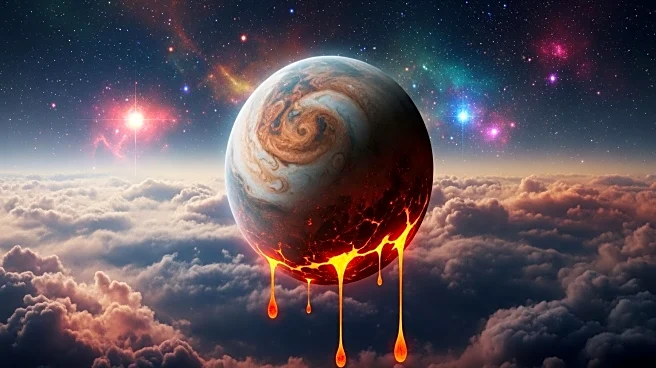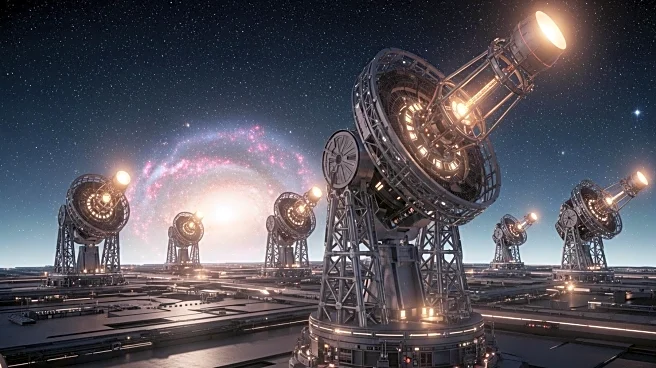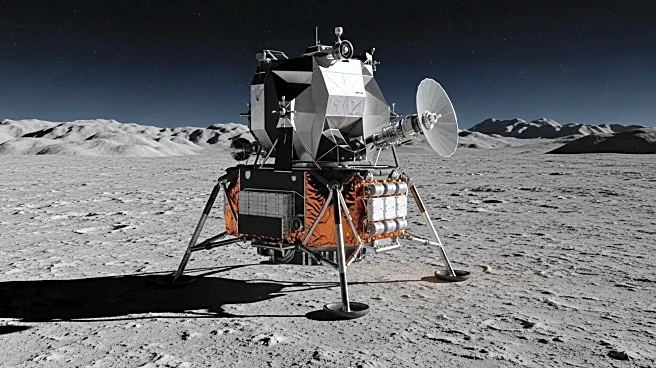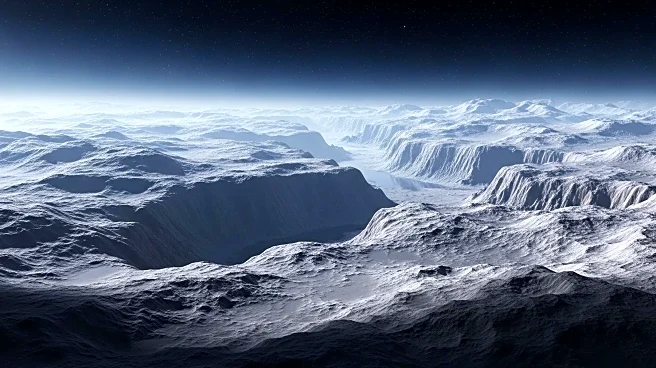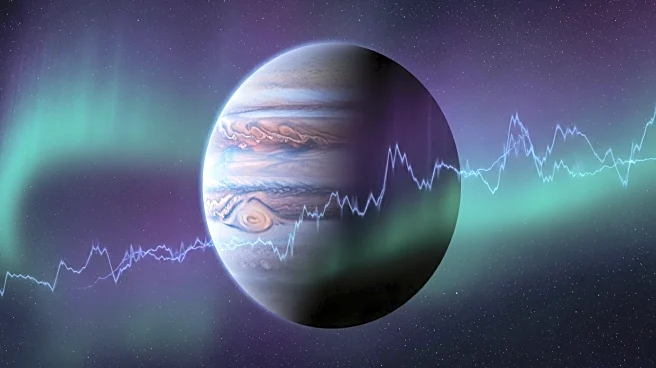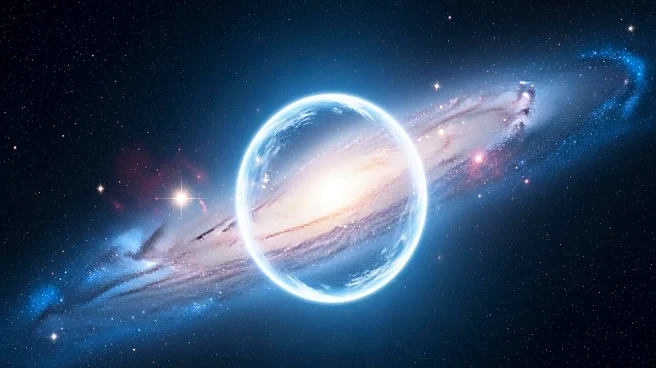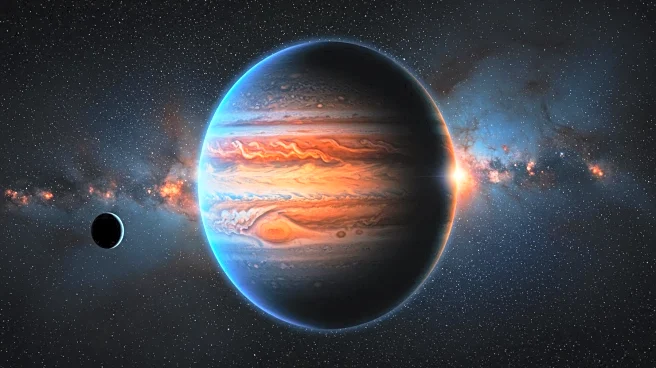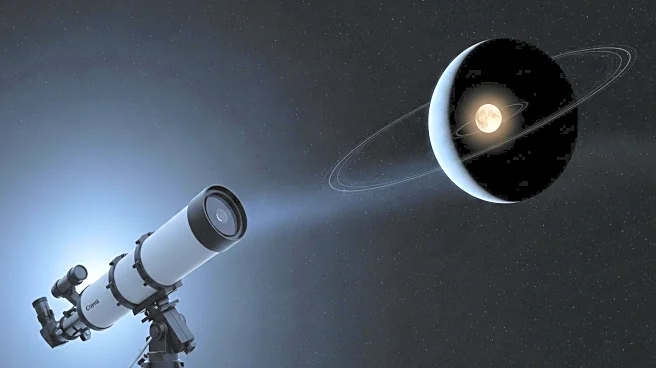What is the story about?
What's Happening?
Researchers from Nagoya University and the Italian National Institute for Astrophysics have determined the formation period of Jupiter using molten rock droplets, known as chondrules, found in meteorites. These chondrules were formed by high-speed collisions of planetesimals, triggered by Jupiter's gravitational influence during its formation 4.5 billion years ago. The study, published in Scientific Reports, used computer simulations to show that Jupiter's growth caused these collisions, providing a timeline for its formation. This research offers new insights into the early solar system and the processes that led to the formation of giant planets.
Why It's Important?
This study provides a clearer understanding of the timeline and processes involved in the formation of Jupiter, one of the solar system's most influential planets. By accurately dating Jupiter's formation, scientists can better understand the dynamics of the early solar system and the role of giant planets in shaping planetary systems. The findings also suggest that similar processes may have occurred in other planetary systems, offering insights into the formation of exoplanets. This research could influence future studies on planet formation and the evolution of the solar system.
Beyond the Headlines
The study's implications extend beyond the solar system, as it suggests that the formation of chondrules and giant planets may be a common occurrence in the universe. This could lead to a reevaluation of the conditions necessary for planet formation and the potential for habitable environments in other systems. The research also highlights the importance of interdisciplinary collaboration in advancing our understanding of planetary science.
AI Generated Content
Do you find this article useful?
